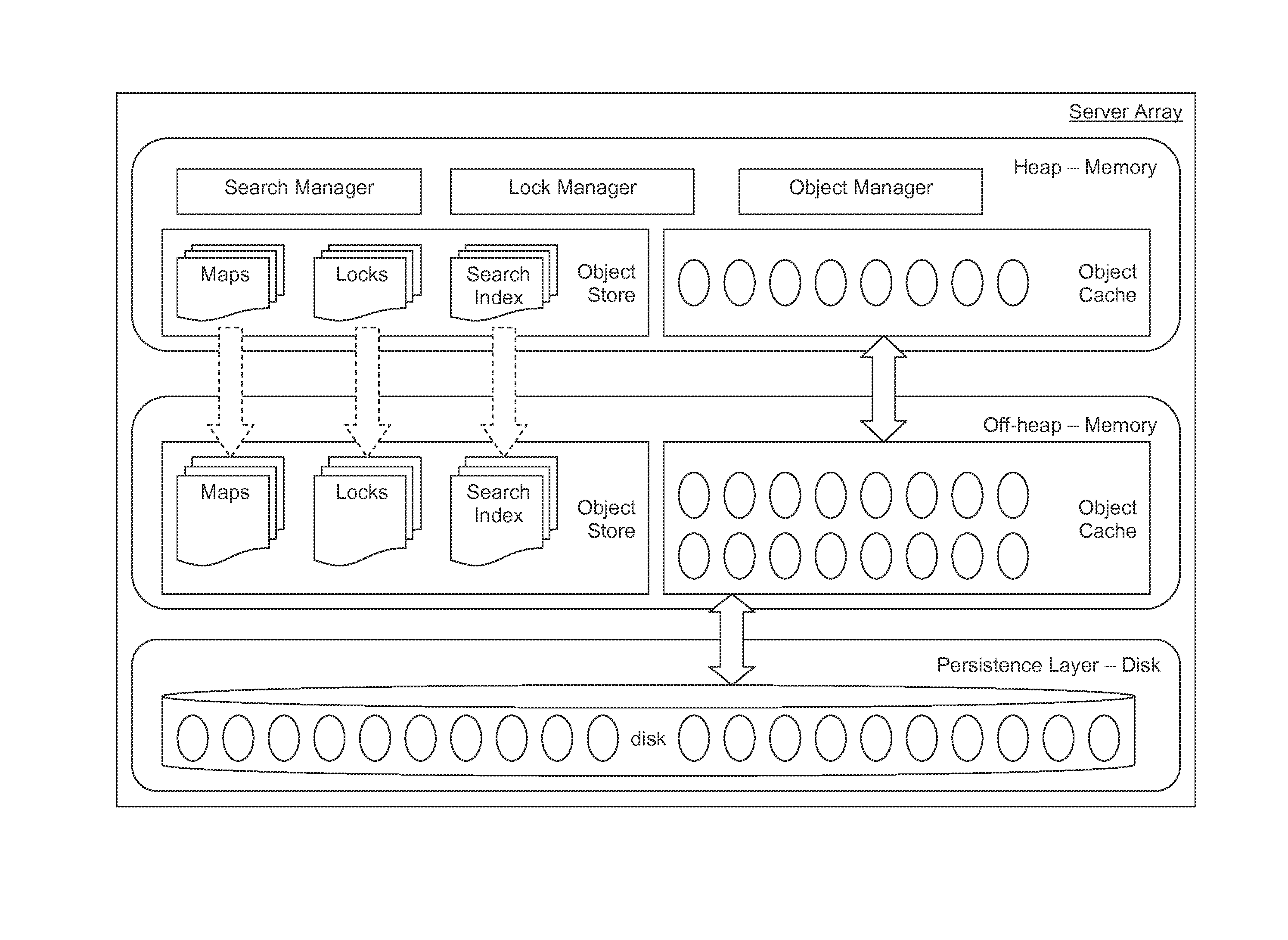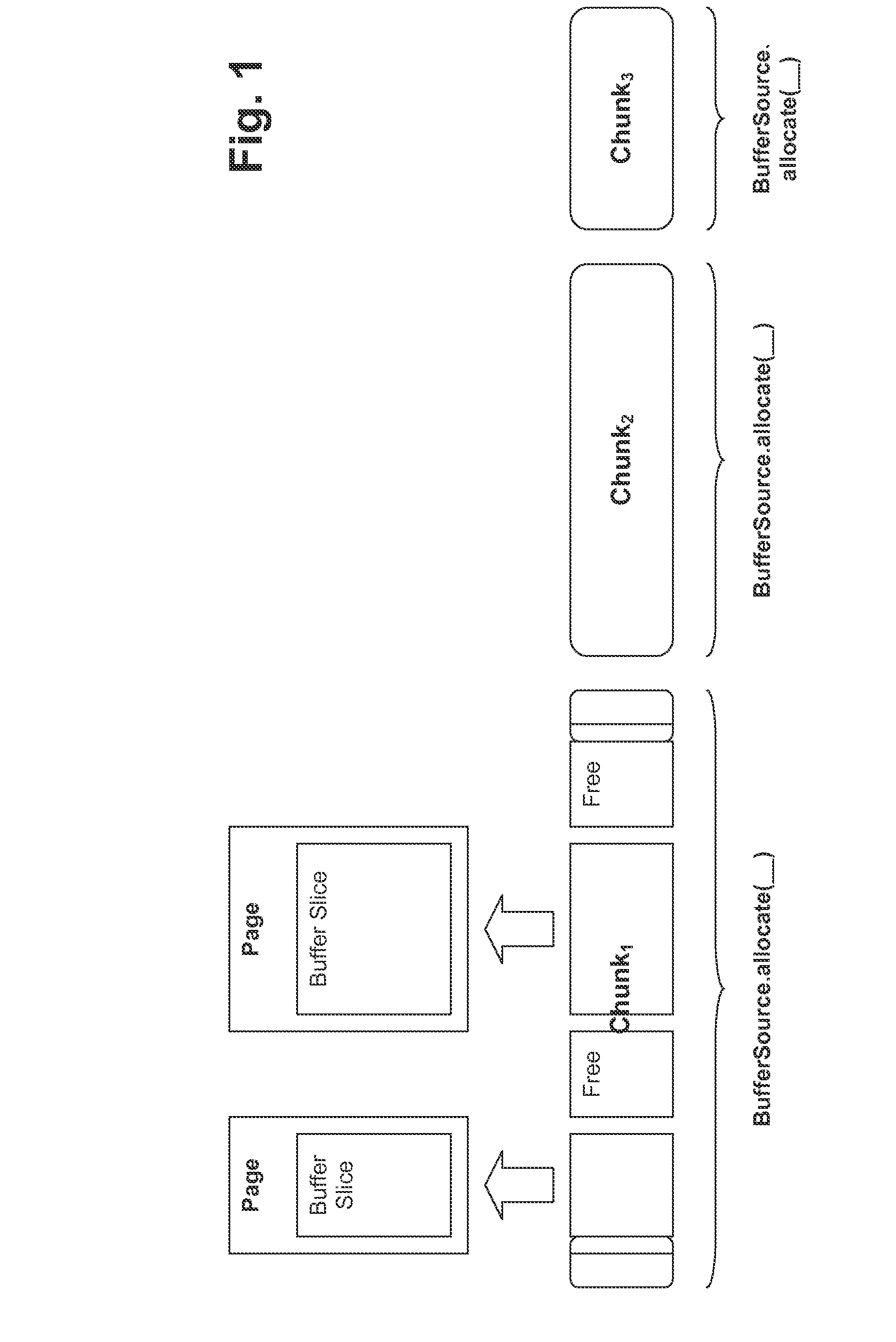Off-heap direct-memory data stores, methods of creating and/or managing off-heap direct-memory data stores, and/or systems including off-heap direct-memory data store
a direct memory and data store technology, applied in the field of computer system memory management techniques, can solve the problems of java-based environments slowing at an exponential rate, affecting the performance and determinism of running applications, and applications that execute on garbage-collected runtimes face an increasing challenge to handle ever-increasing amounts of data
- Summary
- Abstract
- Description
- Claims
- Application Information
AI Technical Summary
Benefits of technology
Problems solved by technology
Method used
Image
Examples
example implementation
for HttpSessions
[0114]Certain example embodiments may be used in connection with HttpSessions, e.g., to provide the ability to store http sessions in the off-heap cache described above. HttpSessions allows an application server to scale-up to billions of users instead of tens of thousands. As HttpSessions are created, they are either directly placed in the off-heap cache or stored in an on-heap cache to later be stored in off-heap when on-heap is full. Retrieval works by first checking the on-heap cache and, if there is a miss because the desired data is not there, attempting retrieval from the off-heap cache.
[0115]Thus, certain example embodiments may enable access to all of the RAM in a machine to a single garbage-collected process without the penalty associated with garbage collecting such huge memory on heap. Access to off-heap memory behind a standard cache interface in a garbage-collected runtime may be transparent. Similar to the above, access to off-heap memory may be provid...
example
[0185]It will be appreciated that “accommodating terabytes-worth of data” means accommodating (e.g., scaling to, managing, generally making available, etc.) at least 1 TB of data. Thus, when it is said, for example, that the off-heap memory is scalable up to a size of the computer system's memory, upon direction from the memory manager, to accommodate terabytes-worth of data, it will be understood that the off-heap memory is scalable up to 1 TB, 10 TB, 100 TB, and / or beyond, and may be limited by, e.g., the size of the computer system's memory. Similarly, the phrase “up to the size of the computer system's memory” and similar such phrases should not be strictly interpreted, as it will be appreciated that scaling all the way up to the size of the computer system's memory may be practically prohibited in some cases because of other items occupying at least some space therein, e.g., the OS kernel, etc. Instead, these phrases might be better understood, for example and in certain scenar...
PUM
 Login to View More
Login to View More Abstract
Description
Claims
Application Information
 Login to View More
Login to View More - R&D
- Intellectual Property
- Life Sciences
- Materials
- Tech Scout
- Unparalleled Data Quality
- Higher Quality Content
- 60% Fewer Hallucinations
Browse by: Latest US Patents, China's latest patents, Technical Efficacy Thesaurus, Application Domain, Technology Topic, Popular Technical Reports.
© 2025 PatSnap. All rights reserved.Legal|Privacy policy|Modern Slavery Act Transparency Statement|Sitemap|About US| Contact US: help@patsnap.com



